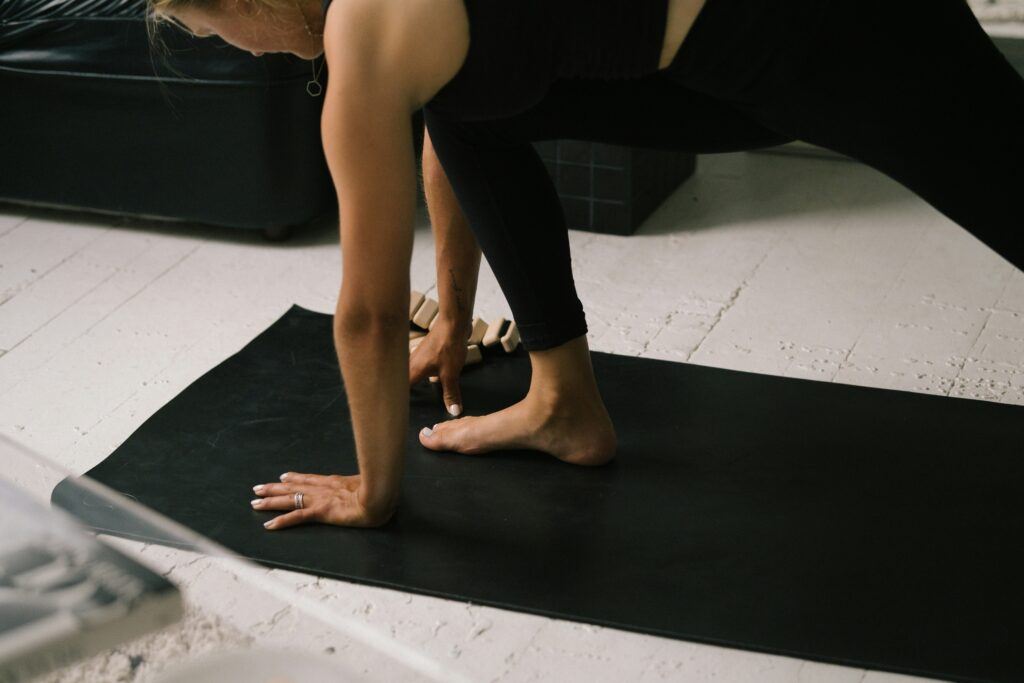Dynamic warmups have grown pretty popular in fitness circles, and there’s a good reason for that. For years, most of us were told to spend time stretching and holding each stretch before exercise those familiar static stretches everyone learned back in gym class. But both research and practical experience now show that if you really want to get your body ready for a workout or physical activity, a dynamic warmup does a way better job than static stretching alone. In this article, I’ll break down why that is, what dynamic warmups actually include, and share tips to help you get started and stay motivated with this all-in-one approach.

What Are Dynamic Warmups?
Dynamic warmups are basically a series of controlled, movement-based exercises that help get your heart rate up, warm up your muscles, and prep your joints for whatever activity you’re about to do. Unlike static stretching, where you hold a position for a set amount of time, dynamic moves keep your body in motion. Think leg swings, walking lunges, or arm circles—these get your blood pumping instead of having you stand still and hold a pose.
The main goal is to copy or imitate the kinds of movements you’ll actually use later. For example, before playing soccer, your warmup might include jogging lightly, doing high knees, and lateral shuffles. If you’re prepping for a strength session, you might go through bodyweight squats, hip circles, and shoulder rolls. This way, you boost your range of motion, wake up your muscles, and prep your nervous system—all important for a smooth workout.
Why Static Stretching Alone Isn’t Enough
Static stretching still has benefits, especially if you’re looking to improve your long-term flexibility. But sticking with only static stretches before your main activity means you miss out on several big benefits dynamic warmups offer.
- Limited Muscle Activation: Static stretching doesn’t really “wake up” your muscles the way movement does. It gently lengthens your muscles but doesn’t prime them for action.
- Doesn’t Raise Heart Rate Enough: Static stretches by themselves won’t really get your blood moving or your body temperature up. A couple of minutes of dynamic moves, though, can do the trick and get your body ready to go.
- Can Reduce Power Output: Some research has even shown that static stretching right before explosive or strength activities can lower your immediate performance.
That’s why more coaches and trainers focus on dynamic warmups as the main way to kick things off. You can still use static stretching, but the best time for it is as part of your cooldown or recovery, after you train and your muscles are already loose.
Benefits of Dynamic Warmups
Dynamic warmups offer plenty of perks for everyone from beginners to experienced athletes. Here are some of the top benefits you can expect:
- Gets Your Blood Flowing: It lifts your heart rate and pushes more oxygen to your muscles, so you move better and avoid feeling stiff.
- Preps Your Joints: Guiding your joints through their natural range of motion helps lubricate them, dropping your risk of injury.
- Mental Focus: Active movement gets you locked in for your workout by helping your mind switch into training mode.
- Better Muscle Activation: Dynamic moves get your nervous system ready, so your muscles fire more quickly and efficiently.
- Boosted Performance: Most people feel quicker, stronger, or smoother in their movements after a dynamic warmup versus jumping into things cold or relying just on stretching.
Common Dynamic Warmup Exercises
Here are some classic dynamic warmup exercises to help you prep for almost any activity. You can tailor these up or down depending on your fitness level and what you’re about to do:
- Walking Lunges: Great for your legs and hips—you can march them forward or do them in place.
- Arm Circles: Simple to do anywhere, perfect for loosening shoulders.
- High Knees: Fires up your lower body and core, and gets your heart going.
- Butt Kicks: Perfect for stretching your hamstrings and getting your legs moving.
- Leg Swings: Loosens the hips, groin, and lower back.
- Hip Circles: Moves your hips and lower spine through their full range—useful before any lower body exercise.
- Torso Twists: Focuses on loosening your core and mid-back.
- Inchworms: Gently preps upper and lower body, helps boost mobility.
Take each exercise for about 20-30 seconds and shoot for a warmup session lasting five to ten minutes total. There’s no perfect sequence—just try to cover all the main movements and muscles, and switch things up to keep it fresh.
Dynamic vs. Static: When to Use Each One
Both dynamic and static stretches play a part in an effective routine. What matters most is the timing. You want to use dynamic warmups when you’re getting started, while static stretching is best for after your main workout. When your muscles are cold, holding a pose won’t give you the same benefits as saving those stretches for when you’re winding down and your body is warm.
If you want to boost flexibility, definitely mix in plenty of static stretching after your session. But before you start, you’ll get more mileage out of active movements that help your muscles, joints, and brain get ready to move safely and smoothly.
Potential Pitfalls and Tips for a Good Warmup
- Not Moving Enough: A couple of slow arm swings or toe touches aren’t enough. You should be warmer and breathing a little heavier by the end—without feeling tired or overworked.
- Skipping the Warmup: We all get rushed sometimes, but skipping the warmup can make workouts feel rough and might even raise your chance of getting hurt.
- Same Routine Every Time: Try to switch up your warmup based on your main activity. This keeps things interesting and targets the most important areas for that day.
- Too Intense: Remember, you’re just priming your body—not trying to win a race. Movements should be controlled and steady, not all-out.
Staying consistent and listening to your body will help you notice the benefits of warming up over time, including better sessions and faster recovery.
FAQ: Dynamic Warmups and Stretching
Question: Should I completely skip static stretching before I work out?
Answer: You don’t have to ditch it entirely, but dynamic warmups are better for kicking things off. Reserve your static stretches for after your workout, when muscles are warm.
Question: How long should a dynamic warmup take?
Answer: Usually, five to ten minutes gets the job done for most people. Look to get your heart rate up and your muscles feeling loose but not fatigued.
Question: Can I use dynamic warmups before all activities?
Answer: Absolutely. Whether it’s lifting, running, playing sports, or taking a class, dynamic warmups offer benefits. Just match your exercise choices to what you’re about to do.
Question: I only have a few minutes—what’s the most important part to focus on?
Answer: When short on time, hit your main muscle groups, raise your heart rate, and use moves that mimic your activity. Even a quick warmup is better than none at all.
Real-World Examples: How Dynamic Warmups Help
I’ve personally had plenty of days where I was tempted to just start running or jump into a workout without any real prep, and ended up feeling slow and awkward. When I took just five minutes for leg swings, lunges, and torso twists, my body moved much more smoothly, and I had way fewer aches the next day.
This isn’t just unique to me. Lots of athletes and regular gym goers say they feel more nimble, quick to react, and less sore after sessions when they stick with a dynamic warmup. Today, almost all sports teams and trainers insist on some dynamic movement to kick things off. That small investment pays off over and over in how you move and recover.
In physical therapy and rehab, dynamic warmups are also used to help people gently get back to regular activity by restoring movement patterns and building confidence. Overall, dynamic warmups are useful whether you’re a competitive athlete or just aiming to move and feel your best each day.
Best Practices for Effective Dynamic Warmups
- Choose exercises that mirror your main activity. For a run, focus on the legs and hips; for weightlifting, incorporate some upper body dynamic movements too.
- Use a full, comfortable range of motion. Move steadily—steer clear of jerky or forced moves.
- Start easy and ramp up. Begin with light moves and gradually put in a little more energy as you warm up.
- Switch up your routine to avoid boredom and hit different muscle groups as needed.
Building dynamic warmups into your training doesn’t just help you avoid injury and soreness—it helps you feel confident and ready for whatever challenge you’re tackling. If you keep at it for a few weeks, there’s a good chance you’ll wonder why you ever skipped this important step in the first place. Bottom line: taking five to ten minutes to get your body primed sets you up for a stronger, safer, and more fun workout every time. Thanks for checking this post out feel free to to leave a comment, ask questions and be sure to look on the other posts for everything fitness.

